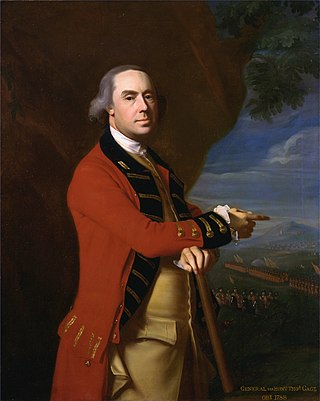
General Thomas Gage was a British Army officer and colonial administrator best known for his many years of service in North America, including serving as Commander-in-Chief, North America during the early days of the American Revolution.

Guy Carleton, 1st Baron Dorchester, known between 1776 and 1786 as Sir Guy Carleton, was a British Army officer and colonial administrator. He twice served as Governor of the Province of Quebec, from 1768 to 1778, concurrently serving as Governor General of British North America in that time, and again from 1785 to 1795. The title Baron Dorchester was created on 21 August 1786.

General James Abercrombie or Abercromby of Glassaugh, Banffshire was a British Army general and Whig politician who sat in the House of Commons from 1734 to 1754. He was commander-in-chief of forces in North America during the French and Indian War, best known for the disastrous British losses in the 1758 Battle of Carillon.

George Augustus Howe, 3rd Viscount Howe was a career officer and a brigadier general in the British Army. He was described by James Wolfe as "the best officer in the British Army". He was killed in the French and Indian War in a skirmish at Fort Ticonderoga the day before the Battle of Carillon, an ultimately disastrous attempt by the British to capture French-controlled Fort Carillon.

Joseph Warren, a Founding Father of the United States, was an American physician who was one of the most important figures in the Patriot movement in Boston during the early days of the American Revolution, eventually serving as President of the revolutionary Massachusetts Provincial Congress. Warren enlisted Paul Revere and William Dawes on April 18, 1775, to leave Boston and spread the alarm that the British garrison in Boston was setting out to raid the town of Concord and arrest rebel leaders John Hancock and Samuel Adams. Warren participated in the Battles of Lexington and Concord the following day, the opening engagements of the American Revolutionary War.
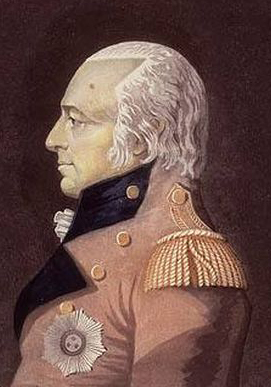
General Sir James Henry Craig KB was a British Army officer and colonial administrator who served as the Governor General of British North America from 1807 to 1811.
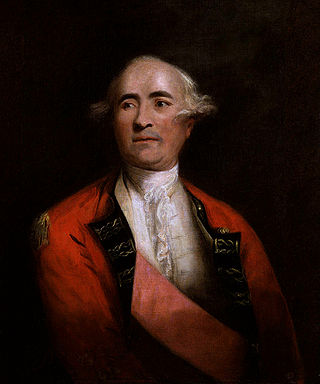
Sir Frederick Haldimand, KB was a Swiss military officer best known for his service in the British Army in North America during the Seven Years' War and the American Revolutionary War. From 1778 to 1786, he served as Governor of the Province of Quebec, during which time he oversaw military operations against the northern frontiers in the war, and engaged in ultimately fruitless negotiations to establish the independent Vermont Republic as a new British province. His administration of Quebec was at times harsh, with the detention of numerous political dissidents and agitators.
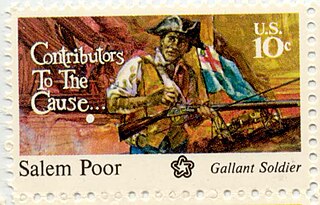
Salem Poor was an enslaved African-American man who purchased his freedom in 1769, became a soldier in 1775. He was involved in the American Revolutionary War, particularly in the Battle of Bunker Hill.

General Sir Robert Abercromby, GCB was a British Army officer, politician and colonial administrator who served as the governor of Bombay from 1790 to 1792. He also sat in the British House of Commons representing the constituency of Clackmannanshire and Kinross-shire from 1798 to 1802. The youngest brother of Sir Ralph Abercromby, he fought in the American War of Independence before serving in India as part of the Bombay Army, where he eventually rose to the rank of Commander-in-Chief, India.

The Battles of Lexington and Concord was the first major military campaign of the American Revolutionary War, resulting in an American victory and outpouring of militia support for the anti-British cause. The battles were fought on April 19, 1775, in Middlesex County, Province of Massachusetts Bay, within the towns of Lexington, Concord, Lincoln, Menotomy, and Cambridge. They marked the outbreak of armed conflict between the Kingdom of Great Britain and Patriot militias from America's thirteen colonies.

John Joseph Abercrombie was a career United States Army officer who served in numerous wars, finally reaching the rank of brigadier general during the American Civil War.

Colonel James Frye III was born on January 24, 1710 in Bradford, Massachusetts to James Frye II and Joanna Sprague. Frye settled in Andover, Massachusetts. His family home, built around 1730 still stands to this day. Frye was an ironworker by trade and operated an ironworks shop in Andover. He is the older brother of Revolutionary War General Joseph Frye.

Major-General John Small was a career British military officer from Scotland who played a key role in raising and leading the 84th Regiment of Foot during the American Revolution. After the war, he settled with many of the men of the 84th Regiment in Douglas Township, Hants County, Nova Scotia. He later returned to Britain. He was appointed as Lieutenant Governor of Guernsey and promoted to major general, serving from 1793 until his death in 1796.
William Haviland was an Irish-born general in the British Army. He is best known for his service in North America during the Seven Years' War.
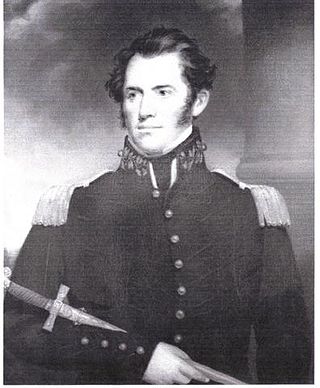
John McNeil Jr. was an officer in the United States Army. He distinguished himself in leading the bayonet charge which secured victory in the Battle of Chippewa. For his conduct in this battle, and in that of the Battle of Bridgewater, where he was severely wounded, he was successively brevetted as lieutenant colonel and colonel. In 1824 he received the brevet rank of brigadier general in recognition of his superior service as a brevet colonel for 10 years. He later received appointment as Surveyor of the Port of Boston, a post he held from 1830 to 1841. The husband of Elizabeth Andrews Pierce, son-in-law of Governor Benjamin Pierce, and brother-in-law of President Franklin Pierce, after retiring McNeil lived at the Pierce family home in Hillsborough, New Hampshire. He died in Washington, D.C., on February 23, 1850, and was buried at Congressional Cemetery in Washington.

The Death of General Warren at the Battle of Bunker's Hill, June 17, 1775 refers to several oil paintings completed in the late 18th and early 19th century by the American artist John Trumbull depicting the death of Founding Father Joseph Warren at the June 17, 1775, Battle of Bunker Hill, during the American Revolutionary War. Warren, an influential Massachusetts physician and politician, had been commissioned as a general but served in the battle as a private. He was killed during or shortly after the storming of the redoubt atop Breed's Hill by a British officer.
Thomas Clark was an officer who served in the War of the Regulation in North Carolina and in the 1st North Carolina Regiment, North Carolina Line of the Continental Army during the American Revolutionary War. He was promoted to brigadier general after the war.
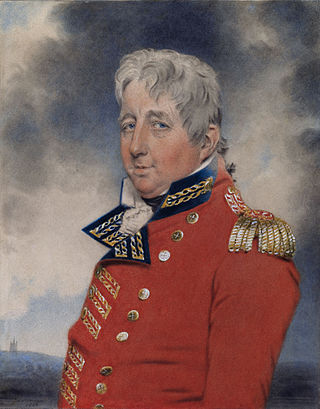
Lieutenant-General Richard G. England of Lifford, County Clare was a British Army officer who became Lieutenant-Governor of Plymouth.

Samuel Blachley Webb (1753–1807) was the commanding officer of the 9th Connecticut Regiment in the American Revolutionary War.

















